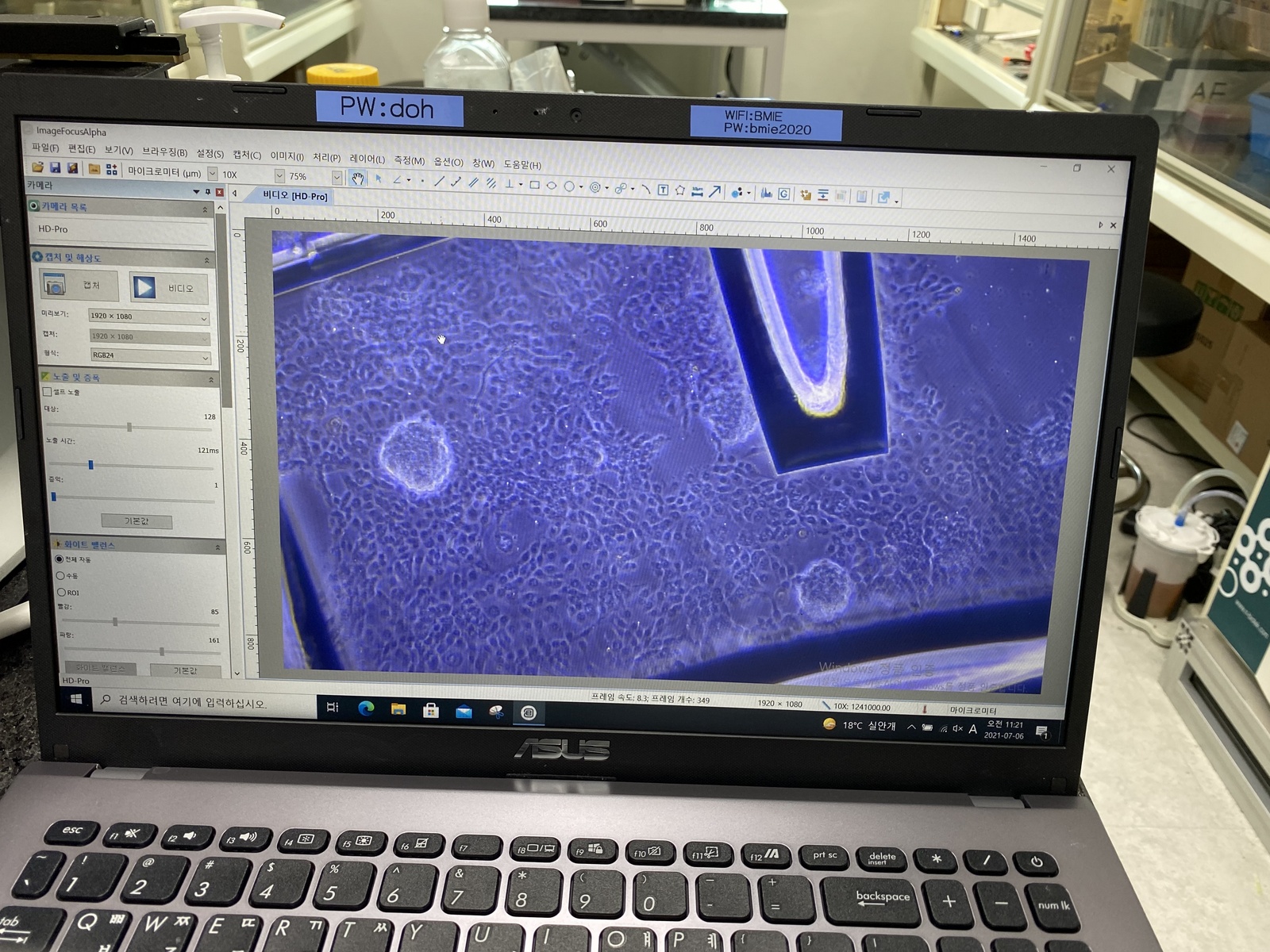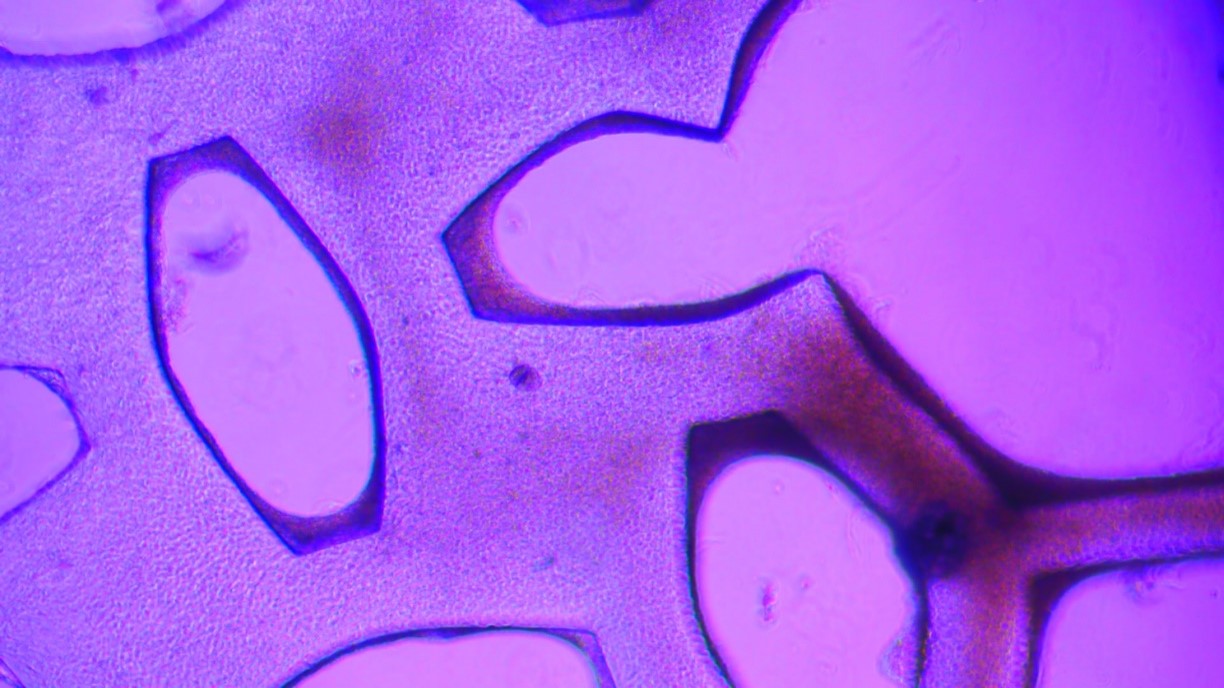Dynamic Response of Fibroblasts
Around a Void Under Biaxial Tension (In progress)
The wound healing mechanism has been studied by many researchers.
They revealed two mechanisms: purse-string mechanism, crawling mechanism.
These mechanisms were studied by model wound experiments conducted in a static environment.
However, wound healing often occurs in dynamic environmental situations of the real world.
Therefore, we need to observe wound healing process in dynamic environments to fully understand the wound healing mechanism.
This study tries to observe the dynamic response of fibroblasts using model wound, a cell-seeded PDMS substrated with a hole.
Our plan is as follows:
- Seed cells in patterned PDMS substrate.
- Slowly stretch the substrate using a self-made biaxial tensile tester.
- Observe any changes in cells during wound healing by immunostaining cells and recording the whole process.
This study is in progress.
We succeeded in seeding cells in patterned PDMS substrate.

Figure 1. Seeded NIH-3T3 on patterned PDMS
Also, we successfully built a biaxial tensile tester.
Below is a blueprint of the biaxial tensile tester.
Interactive 1. The blueprint of the biaxial tensile tester.
Below are demo videos of the biaxial tensile tester.
Video 1. Time lapse of biaxial tensile tester. (true velocity: 1cm/day)
Video 2. stretching fractal-cut PDMS substrate (100 times faster than real velocity)
After validating the ability of the device and the possibility of our experiment, we also observed wound healing while the machine stretched the substrate.

Figure 2. cells on the PDMS substrate after biaxial tension